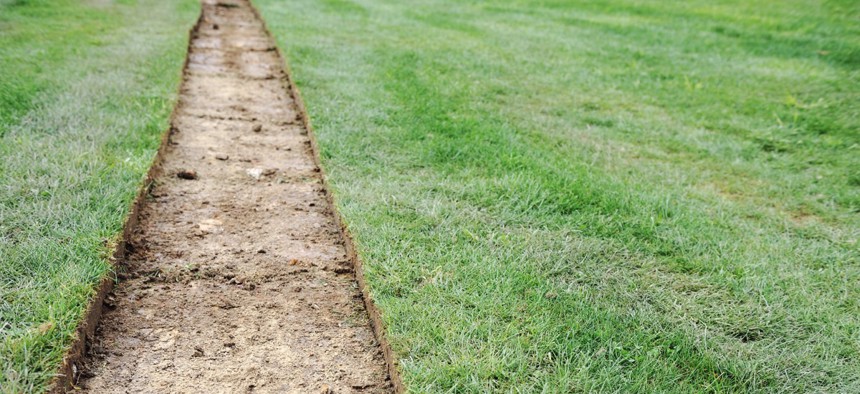Southern California Water Agencies Spar Over Making Conservation Program Nation’s Largest

Zurijeta / Shutterstock.com
Los Angeles and San Diego don’t agree that turf-removal rebates are encouraging sustainable landscaping.
The water agencies that serve Los Angeles and San Diego have very different opinions on adding $350 million to the Metropolitan Water District’s conservation budget.
Requests for $2-per-square-foot turf removal rebates—estimated to save 42 gallons of water per square foot replaced with drought-tolerant landscaping—exceeded the district program’s $100 million in funding.
A decision on how much to increase the two-year budget by will be made during a special board meeting on Tuesday afternoon in Los Angeles, and the staff-recommended $350 million option would make the water-saving program the nation’s largest at $450 million total.
The Los Angeles Department of Water and Power "is concerned about any major reductions in funding that may impact the viability of the turf replacement program," Michelle Figueroa, a department spokeswoman, told the Los Angeles Times. "This program greatly supports the governor's call to reduce water use and assists local water agencies in meeting their water use targets."
Rebate demand skyrocketed when Gov. Jerry Brown ordered a drought-driven, statewide 25-percent reduction in water use on April 1, and Los Angeles already offers its own $1.75 per-square-foot rebate on top of MWD’s.
An “unprecedented increase” in turf removal requests occurred after the governor’s executive order, according to the MWD staff report, with weekly requests increasing above $10 million the next three weeks and residential applications between 2,500 and 3,000 weekly:
In the recent two weeks, additional requests for turf removal more than tripled to above $32.8 million for the week ending on May 3 and more than quadrupled to $48.2 for the week ending on May 10. Of these requests, 78 percent of the dollars requested were for commercial turf removal projects. The rate of additional requests for turf removal funding seems to have dropped off with the week ending May 17 coming in at $16.7 million in net requests.

But increasing the conservation budget could raise water rates up to 21 percent, reported the San Diego Union-Tribune. And that doesn’t have all of the Southern California district’s 26 member cities and water agencies happy.

Four board members on the San Diego County Water Authority wrote a letter in May opposing the funding increase on the grounds meaningful water savings hadn’t been proven nor program beneficiaries disclosed.
"Our position was, that before any more money is appropriated, there needed to be a better accountability, better transparency and better information provided on the true value of where that money is being spent," said SDCWA Director Michael Hogan, according to the Union-Tribune.
There are currently no rebate limits, but the district board will consider capping one-time residential rebates at 3,000 square feet and reducing the commercial rebate to $1 per square foot up to 25,000 square feet annually.
Homeowners comprise the majority of applications but businesses like golf courses receive the bulk of rebates, causing San Diego district representatives to question whether they’re not just paying for extensive makeovers.
Three existing funds can cover the budget increase, according to the staff report: $160 million from the Water Rate Stabilization Fund, $140 million from the Water Management Fund and $50 million from the Water Stewardship Fund. An estimated $335.9 million in rebates would be paid for 232,732 acre-feet of water savings during the next 10 years.
MWD might consider seeking state funding or tighter restrictions down the road, but already San Diego funds its own rebate program, in part, with grants. Its funds exhausted, that program will resume July 1.
"We've reached the tipping point, and we don't need $2-per-square-foot incentives to get people to do this any longer," SDCWA Board Member Keith Lewinger told the Times. "We can't buy our way out of the drought by removing turf. We just can't afford it."
NEXT STORY: Can states afford to wait on chip and PIN cards?






